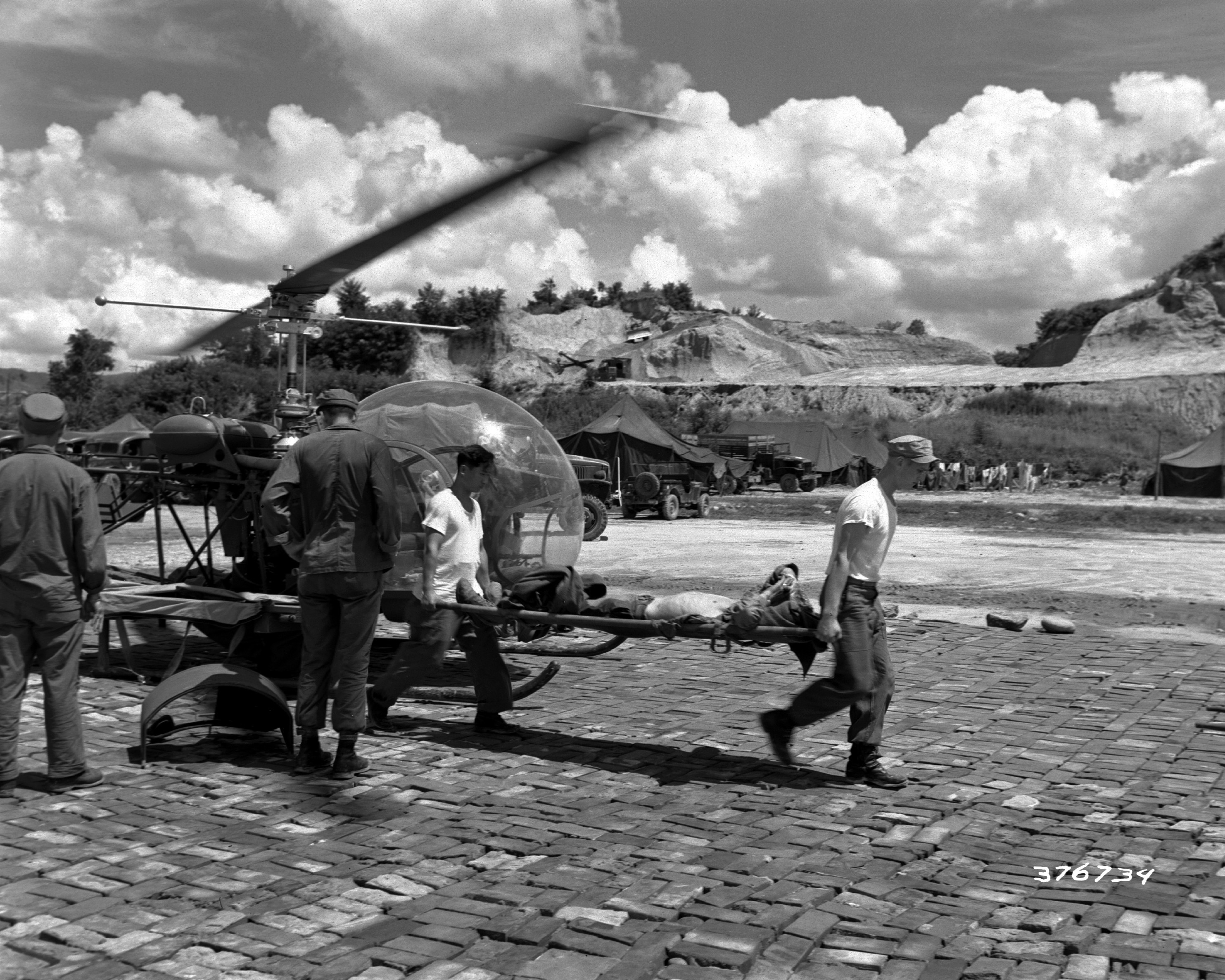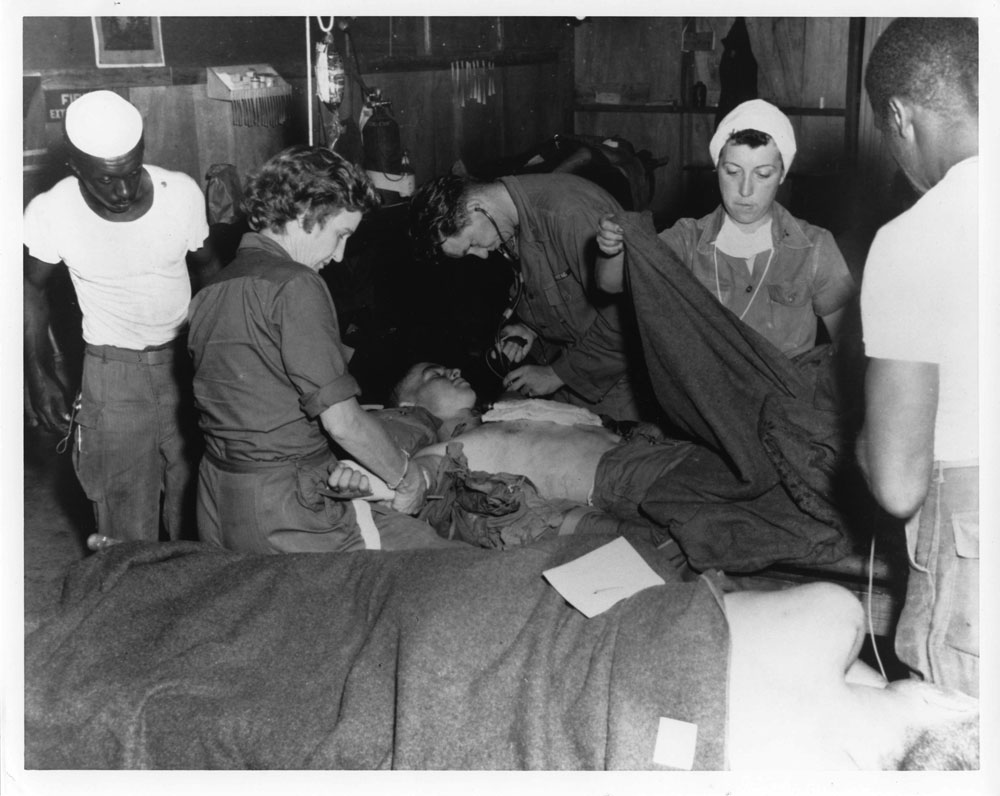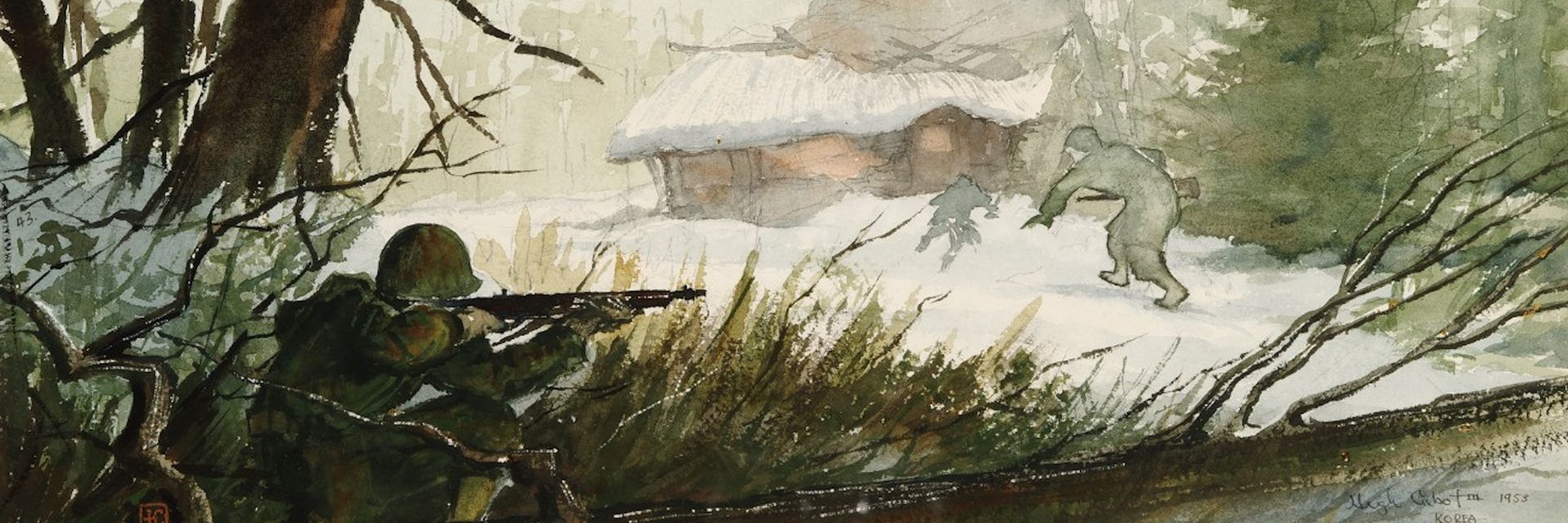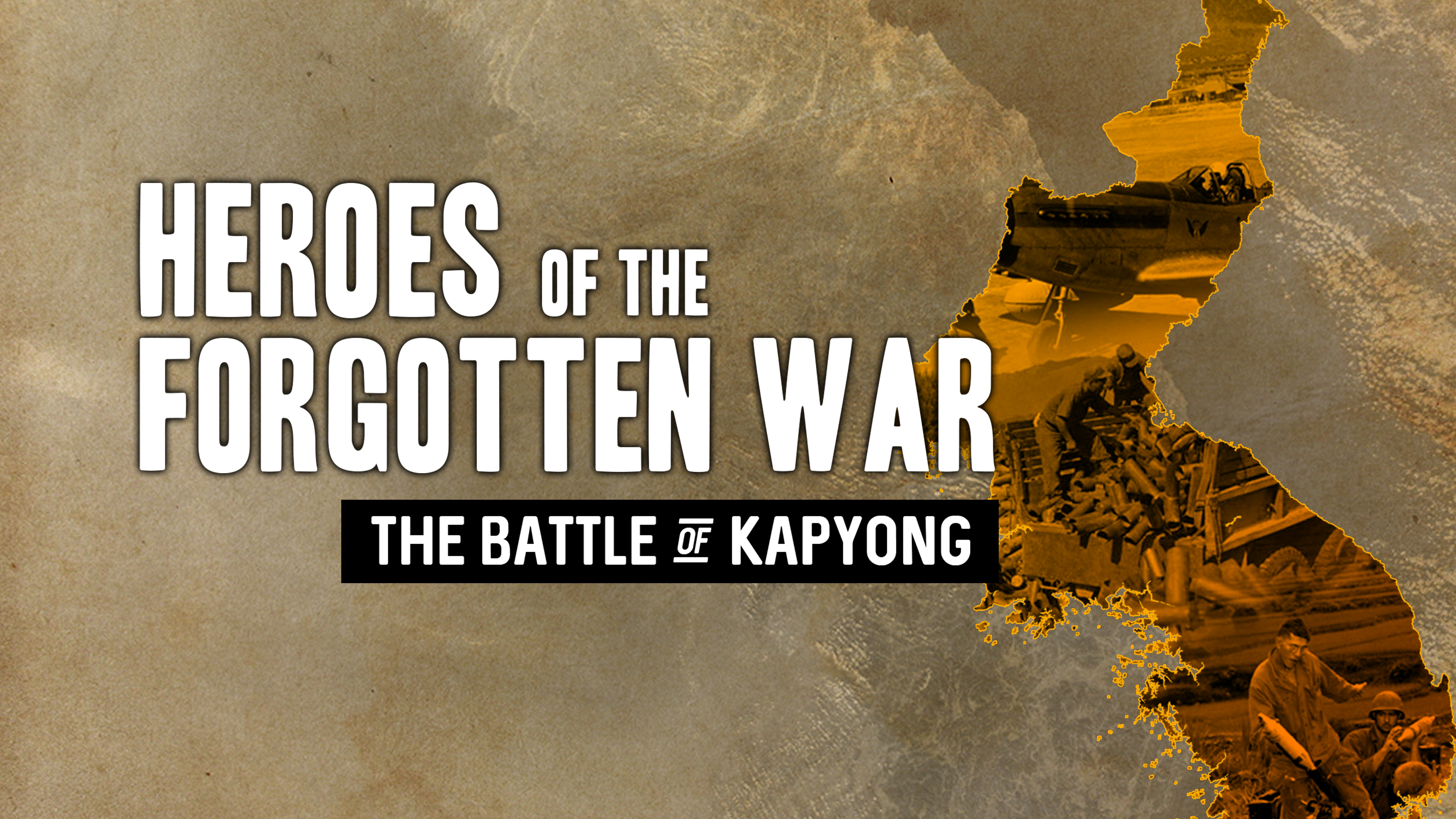Do you think M*A*S*H was just a made-up TV comedy? No, it was an entertaining retelling of a facet of the Korean War that saved many lives.
◊
The Korean War, even by modern standards, was a short war. Officially considered a conflict, sometimes called a police action, it was unique in that it was the first war in which an organization of international entities, the United Nations, made a decision to go to war as a reaction to aggression. The aggressor, North Korea, was soon joined by its communist ally, the People’s Republic of China, to oppose the U.N. coalition fighting on the side of South Korea.
Regardless of how the action was labeled, the Korean War had casualties like every other war. Experience and technology, however, combined to give the United Nations forces unprecedentedly low death rates.
Canadian, Australian, and New Zealander troops are the heroes of this unforgettable MagellanTV documentary.
New War, New Medicine
One of the medical improvisations used in Korea was different, though not entirely new. It began with a new way to look at the challenges of patient triage and surgical organization. Jonathan Letterman, at the Battle of Gettysburg, is credited with the first system of military triage organization when he was Chief Surgeon for the Army of the Potomac.
Over the next 80 years, the U.S. Army continued to make improvements to the model. Mortality rates continued to decline. In Italy, in 1943, Auxiliary Surgical Groups were formed to reduce the time to treat the most serious surgery cases. The trio of “buddy aid,” battalion aid stations, and the new field surgical hospital cut down on the long time to get a patient transported to a standard military hospital.
After North Korea failed to heed the U.N.’s appeal for a cease-fire, the U.N. Security Council appointed U.S. President Harry S. Truman as its executive agent to restore peace in Korea.
In 1946, a team of U.S. Army surgical consultants that included Dr. Michael E. DeBakey (later to become a world-famous innovator in heart surgery) developed a new system that would officially become the Mobile Army Surgical Hospital (MASH) unit. Each MASH unit had 60 beds, as well as surgical, nursing, and other staff available at all times. The mixed command of officers and enlisted personnel of a single MASH unit could provide medical support to combat units from 10,000 to 20,000 soldiers.
In combat situations, the “Golden Hour” is the term used to describe the first hour after an injury is sustained. In trauma, it is the most important hour. A prime objective of the MASH units was to cut down on patient mortality during this critical period.
 Soldiers of the 35th Infantry Division take cover from exploding mortar shells near the Hantan River in central Korea. (Source: Library of Congress)
Soldiers of the 35th Infantry Division take cover from exploding mortar shells near the Hantan River in central Korea. (Source: Library of Congress)
MASH Goes to War
The MASH concept was first used in combat during the Korean War. The surgical hospitals were delivered by truck and set up in forward locations just out of enemy artillery range. Each one was designed to support a division. There were four MASH units in Korea, but, because of a shortage of evacuation hospitals, each MASH unit was expanded to 150 beds and treated more than just surgery patients. For example, since much of the war was fought during frigid months on the Korean peninsula, frostbite and other weather-related conditions resulted in an increase of cases during those times.
Thanks to a popular TV series based on the 1970 Robert Altman film M*A*S*H, the MASH concept brought the Korean War into the living rooms of Americans in the 1970s. The Bell H-13 helicopter, an iconic part of the TV series, including the opening, highlighted one of the hospital’s noteworthy elements. These helicopters evacuated seriously wounded soldiers from the front.
The Role of Helicopters
The flying ambulance concept arose in July 1950 with occasional ground unit requests to the 3rd Air Rescue Squadron, Fifth Air Force. The relatively new Sikorsky H-5 helicopter was able to squeeze into the largely mountainous combat terrain, bringing back wounded men who might not have survived a slower and more treacherous ground route to forward battalion aid stations. Quickly, the Army formally adopted the use of helicopters for medical evacuation.
The first of four specially trained units flying the Bell H-13, the U. S. Army 2nd Helicopter Detachment, arrived in Korea on November 22, 1950. The unit became operational as an attachment to the 8055th Mobile Army Surgical Hospital. The early treatment of wounded in the MASH units, literally minutes from the front lines through the helicopter airlift, helped lower the fatality rate for the Army from 4.5 percent in World War II to 2.5 percent in Korea.
 A wounded soldier is taken from a Bell H-13 helicopter in Korea. (Credit: Sgt. Paul E. Norman, via Wikimedia Commons)
A wounded soldier is taken from a Bell H-13 helicopter in Korea. (Credit: Sgt. Paul E. Norman, via Wikimedia Commons)
Developed during World War II, the military version of the helicopter came into common use during the Korean War. The first rotary blade aircraft used in the transport of the wounded was, as mentioned, the Sikorsky H-5. The second generation of this Connecticut-manufactured helicopter, developed during World War II, began the war as a rescue craft for downed United Nations pilots.
Eventually, the H-5 was replaced by the Bell H-13 Sioux, a smaller, lighter helicopter that came into use as the principal medical evacuation helicopter once those trained army pilots arrived and began dedicated MASH service with the craft. The H-13 provided other services to the forces in Korea, including observation and reconnaissance, but, in its primary role, it gained the nickname “Angel of Mercy.”
Getting the patients to the MASH units was only part of the process, of course. Once there, the surgical teams sprang into action. The surgeries and other care activities were in the hands of well-trained Army surgeons, specialized doctors and dentists, assisted by nurses, orderlies, and support personnel. The hospital was a self-contained camp. The women in the MASH units were in the Army Nurse Corps and Women’s Medical Specialist Corps. The tasks of these units included surgical nurses and ward supervisors, as well as X-ray and other technicians.
By the spring of 1951, there were more than 300 women nurses serving in Korea. Despite numerous requests within the army, no WAC (Women’s Army Corps) detachment was established in Korea. The women in the war zone were all on individual assignments.
In July 1953, an armistice was signed dividing North and South Korea at the pre-war border of the 38th parallel. Various circumstances (General Dwight D. Eisenhower’s election as president of the U.S.; the death of Soviet leader Josef Stalin) led to the cease-fire. With the war winding down, the need for MASH units in Korea ended.
Post-Korea Use of MASH Units
During the Vietnam War, the MASH unit was superseded by a new concept in surgical hospitals for use in combat areas. The MUST (Medical Unit, Self-contained, Transportable) was a larger, more technically advanced model and expanded its focus to include the wider variety of wounds the war introduced. Only one MASH unit, the 2nd MASH Unit, was set up in Vietnam, and only between October 1966 and July 1967. The MUST units operated from trailers and inflatable sections rather than tents.
Burn wounds were increasingly common in Vietnam, and MASH units were not equipped to handle the new treatments. Previously, MASH units had a mortality rate of up to 90 percent for burn victims. Improved patient transportation, advancements in medical technology, and the layout of the MUST units took patient treatment and care well beyond the general and trauma surgery that made MASH units so useful in the Korean War.
 Lt. Col. Hazel Snowden was chief nurse at a 60-bed MASH unit in Korea during the war. (Source: U. S. Army Center for Military History)
Lt. Col. Hazel Snowden was chief nurse at a 60-bed MASH unit in Korea during the war. (Source: U. S. Army Center for Military History)
In September 1990, during the Gulf War, the 5th MASH, 44th Medical Brigade, deployed from Fort Liberty, North Carolina, to King Abdul-Aziz Air Base, Royal Saudi Air Force, Daharan, Saudi Arabia. It became the first fully functional U.S. Army hospital in the country. The 5th MASH was operationally attached to the 24th Infantry Division and was always the first hospital committed to the region. It provided surgical care at or near the front lines for combat units attacking the western flank of the Iraqi army.
In March 1991, the 159th MASH of the Louisiana National Guard supported the 3rd Armored Division in Iraq during Operation Desert Storm. Other MASH units operated domestically, ready to be called on if needed, including the 2nd MASH and 10th MASH units of the 1st Medical Group; the 115th MASH, 475th MASH, and 807th MASH units of the 341st Medical Group; and the 912th MASH of the U.S. Army Reserve in Tennessee. The U.S. Army deactivated the last MASH unit on February 16, 2006.
Casualties in war are no laughing matter. The endearing antics and snappy one-liners of Hawkeye, Trapper John, Radar, Hot Lips, and others in the M*A*S*H TV series took on a serious side when the show dealt with actual surgery and suffering. This part of the story more accurately demonstrated the success of the real MASH units in Korea. It was a medical system nearly 100 years in development, born of better medical knowledge, professional experience, and technological innovation. As a method of battlefield patient care and recovery, the MASH experience provided an important link in the continuing effort to reduce mortality, improve care, and decrease suffering among America’s warriors.
Ω
Jay Wertz is an award-winning author, publisher, and filmmaker. He has written seven books, including four volumes in the War Stories: World War II Firsthand™ series. Other books include The Native American Experience; The Civil War Experience 1861–1865; and Smithsonian’s Great Battles and Battlefields of the Civil War, co-authored with Edwin C. Bearss. He is the editor and a primary contributor to D-Day 75th Anniversary – A Millennials Guide and other works for Monroe Publications. He has been a columnist and online contributor for Civil War Times Illustrated, America’s Civil War, Aviation History, Armchair General, and America in WWII magazines. He is also the producer-director-writer of the documentary series Smithsonian’s Great Battles of the Civil War for The Learning Channel and Time-Life Video.
Title Image: U.S. Marines, part of the U.N. force, attack an enemy objective in Korea. (Watercolor by Hugh Cabot, 1953. Source: Naval History and Heritage Command)


